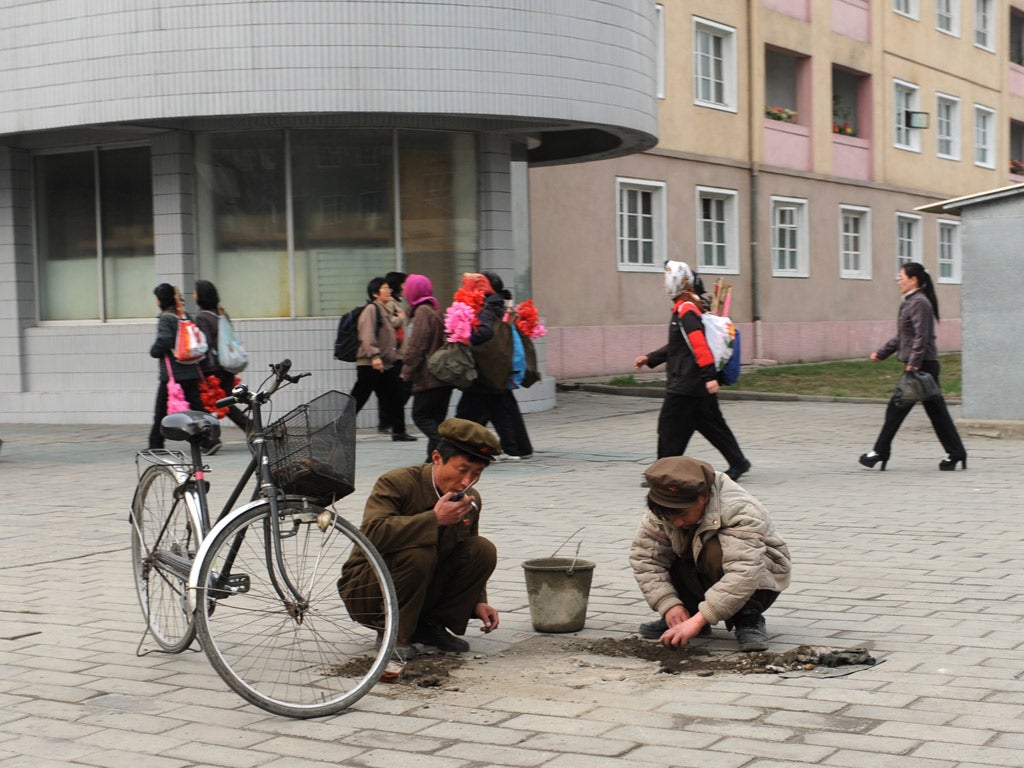Journey into the heart of North Korea's hidden world
Copycat haircuts, missile testsand mass denial. By Tomiko Newson in Pyongyang

In the maternity hospital in Pyongyang, I was shown two sets of triplets all lined up in a row of metal cots. "Ahh," I cooed, then asked were the worn-out mothers were? "Oh, they are not necessary," came the reply.
The regime in North Korea claims it venerates triplets. And they do, but not in a way you or I might celebrate.
They send a helicopter to pick up the pregnant mother and take her to hospital for the birth. When triplets are born, the state takes them away.
In exchange, parents are given gifts – a ring for girls and a silver knife for boys. They say the state looks after them for only the first four years, but it could be forever. While I was there the hospital was celebrating its 415th set of triplets. They had even drawn up a poster to celebrate, complete with pictures of triplets in the state orphanage where the Kim dynasty provides for them. They say it is voluntary, but in a country where you face public execution for making an international phone call, if the state suggests you do something you do it. The logic behind this bizarre behaviour is that triplets are expensive, so that state eases the parents' burden by looking after them. But remember, this is a communist country where the state provides houses for free and food every mouth. I asked why the state couldn't ease the burden by providing a larger house and more food, but got no answer.
I asked if the parents can't afford to feed them as babies, how would they be able to afford three growing four-year-olds when they are supposed to get them back? Again, no answer. There may be a darker reason behind the state's removal of triplets. Kim Jong Il, whose death last December caused millions to weep openly, is reported to have feared an astrologer's prediction that a triplet would kill him.
The regime tells its people they live in a paradise, have nothing to envy and with no access to the outside world, they believe it. This disconnect between the state's mass brainwashing and the dysfunctional reality is at its darkest in the maternity hospital.
The buildings here can be divided into three types of architecture: sixties Bond villain buildings, Soviet-style housing blocs or structures which would look at home in Thunderbirds. Individual action does not exist. Everybody moves in blocks. We saw clusters of hundreds of people huddled together raking the mud or on their knees combing scraps of grass. Even visits to the war museum, where residents learn how the "American imperial aggressors" bowed down in front of the Korean people, are arranged by factory.
In normal cities the bulk of the people are on the road, in cars, taxis or on buses. In Pyongyang it's the other way round. The pavements are full of people who hurry away from you like a shoal of fish from a swimmer. The people of this city are especially selected to live there. Everyone looks the same: the women, jet black hair swept back, all dress in dark colours and pre-war fabrics. No one wears jeans. But there is the odd puncture of colour: female traffic cops – rumoured to have been chosen by Kim Il-sung himself for their beauty – stand out in the their blue coats, painted faces and knee-high boots flashing a rare sight of leg. The guides are confident they live the good life. "Petrol stations, we have tens of them. We even have four supermarkets," bragged the guide. "Not bad for a city of three million," I replied.
One day on an empty motorway our bus suddenly started to slow down. Up ahead were 2,000 to 3,000 people, mainly women, squatting in the middle of the road. The driver sped up, anxious I did not see as the women tried to run out of the way. They had been sweeping the dust off the road with brushes.
We were taken to the People's Study House, the national library, a giant marble tomb of a place. The library boasted a colossal mosaic portrait of Kim. The library boasted a philosopher in residence, there to answer questions on the regime's philosophy, Kim Il-Sungism. It also boasts 30 million books. I used their in-house, off-line computer to search the catalogue for books on Gandhi, Hitler, Stalin, Mao and the Holocaust. Nothing. The contradiction between our guides' great pride in their library's resources its pitiful content made me cry.
The view south, from the North's chilly building with no lights on, was of a bigger, glossier, far more advanced South Korea. The North's soldiers looked like Dad's Army with old-fashioned kit; the South's dressed like Robocops. They are planning to launch a new rocket in the few days. When I pointed out their weapons couldn't hit America, the military commanders giggled: "Yes they can. You will see."
We laughed back, nervously.
But that's North Korea for you – a joke, but not a very funny one.
Join our commenting forum
Join thought-provoking conversations, follow other Independent readers and see their replies
Comments